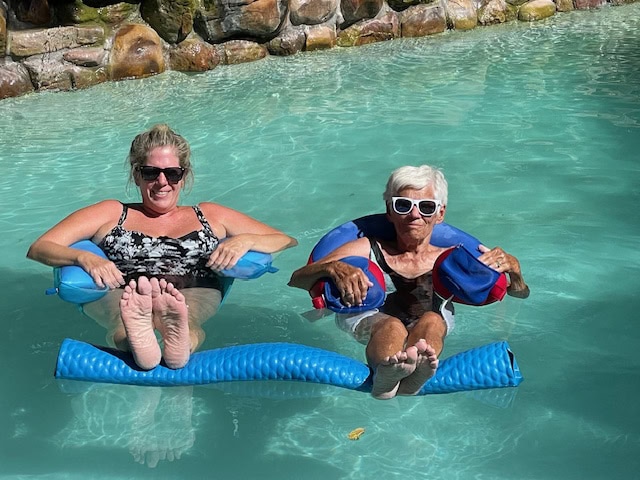Joni Drane – Pet Sitting 101
How did I become a pet sitter?
My parents gave me a puppy at Christmas when I was 12. She was born on Halloween, so I named her Spooky. We have had dogs (both pure breeds and rescues), cats, parakeets, hamsters, and fish, so my love of animals started young. I currently have three adopted dogs — Biggles, Buckles, & Brie
(my three redheads).
My dream is to author a children’s book about the story of adopting dogs. Adopted dogs are so loyal, as they always remember you rescued them. The quote “unconditional love” is so true in this case. The shelters today are extremely overcrowded, and many dogs and cats are living in kennels alone and many are being euthanized. Purebreds are great, and I’ve owned and loved them, but I encourage everyone to consider adoption first. Safe a life!
After moving back to my family home in Lake Country, I was ready to get out of the grind of management and the corporate world. I recognized a need for a “reliable” pet sitter in my neighborhood. I was still very connected to my community, so I decided to post a message on Facebook to offer my services. I started receiving requests immediately. What started as a part-time hobby turned into a full-time business supported completely by referrals from friends and neighbors. I am blessed to do what I love. Most importantly, my clients trust me to take care of their pets and their home. It is truly the most rewarding job I have ever had. I have built lasting friendships with my clients, and I absolutely adore all my pets (aka “kids”).
What are some of the pros and cons of
pet sitting?
PROS — Unconditional love. The love you receive from pets and the friendships you build with your clients is immeasurable.
CONS — Long hours. There are many early mornings and late evenings. I work very long days and weekends and have been known to work months in a row with no days off.
How can I pick the right pet sitter?
Trust/Compatibility — Pick someone you trust and feel comfortable with as they
will be taking care of your pets AND
your home.
Cost — Most pet sitters charge per visit. The average visit should be at least 30 minutes. Prices vary depending on the needs of the client. As a courtesy, always pay the pet sitter upfront. Nothing is worse than having to ask for payment after the job is completed. Most pet sitters will not refund payment if you come home early, as they have already committed their schedule to your pet and home.
Number of visits — Animals can get very depressed when their owners leave. Frequent visits keep the pets comfortable, safe, and happy, and pets need stimulation and companionship when their owners are gone. Three visits daily should be the minimum, as it is not fair to expect your dogs to have to hold their potty for extended periods of time, and four visits if you don’t have a dog door.
Are they local? — It is best to have a pet sitter in or near your neighborhood. It is cost-effective and in case of emergencies the pet sitter does not have far to travel.
Communication — Do they send photos and communicate every visit?
Services offered — Can they administer medicine? Will they pick up pet waste? Do they check mail, take in packages, water flowers, take out trash? Is there an extra charge for this, or is this included in
their service?
Flexibility — Your pet sitter should try to keep your pets on their feeding schedule and regular daily time schedule. That may include early mornings and late evenings. Also, if your vacation should be delayed due to flight cancellation or emergency, can the pet sitter continue beyond the original schedule? An extra fee may
be required.
Emergencies — Are they be ready for an emergency? Pets can get sick or have an accident. Can the pet sitter transport your pet to the vet? Also ask the pet sitter who can substitute for them should the pet sitter get sick or have an emergency.
Social Media — For safety reasons, a pet sitter should never post your address or facts about your home or timeline of your vacation on social media.
Instructions — Most importantly, a pet sitter should require you to fill out an emergency form with all the details of your pets’ names, ages, feeding instructions, medicine requirements, habits, and emergency contacts.






